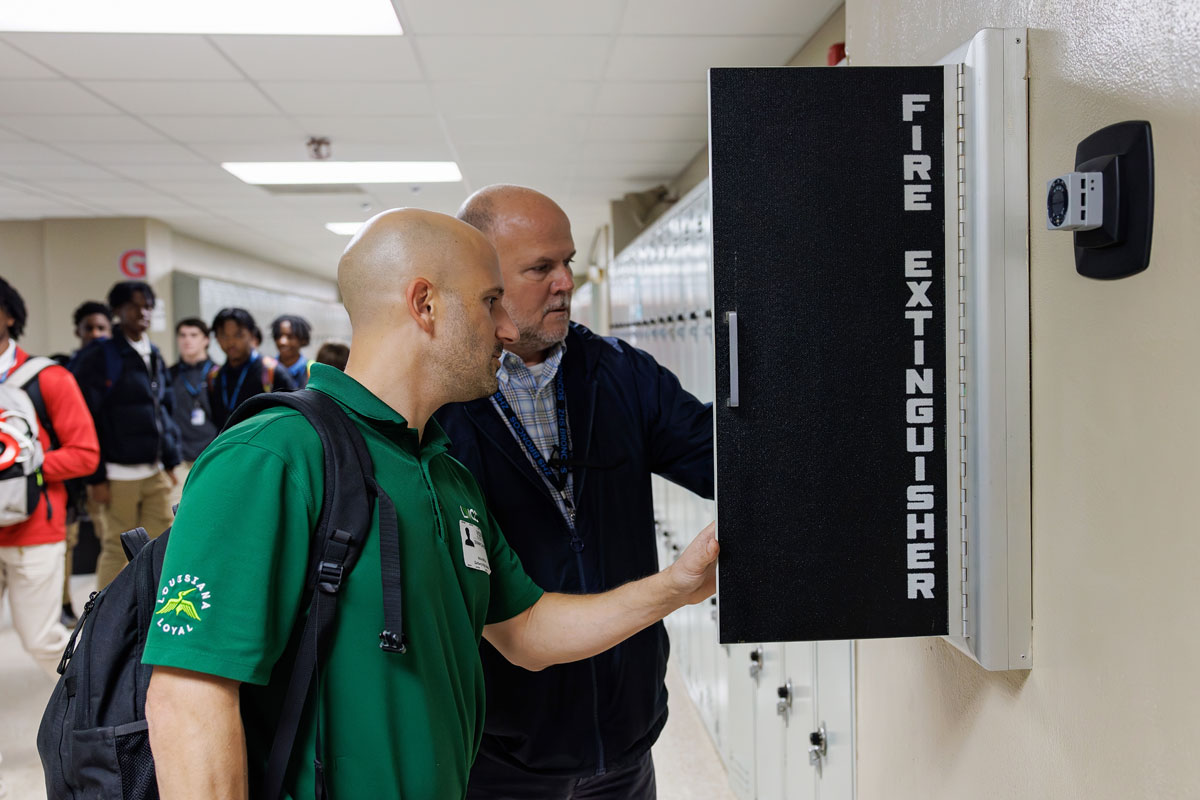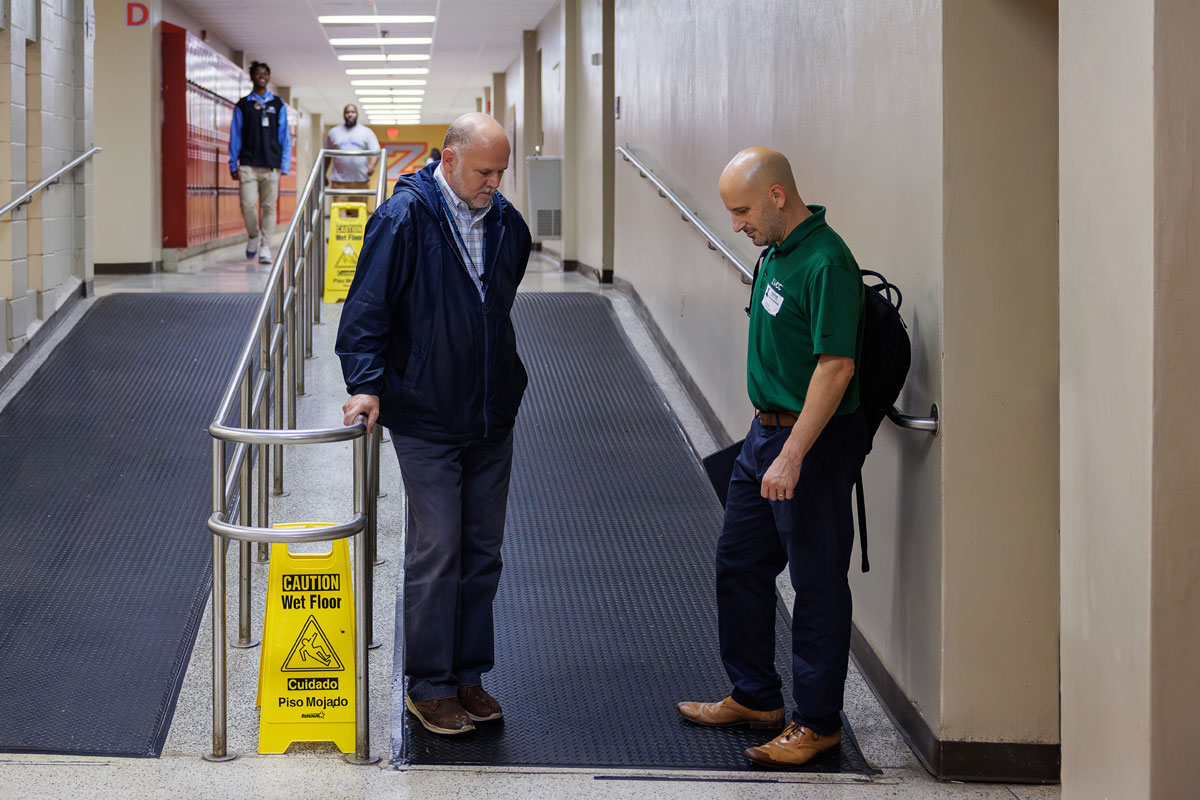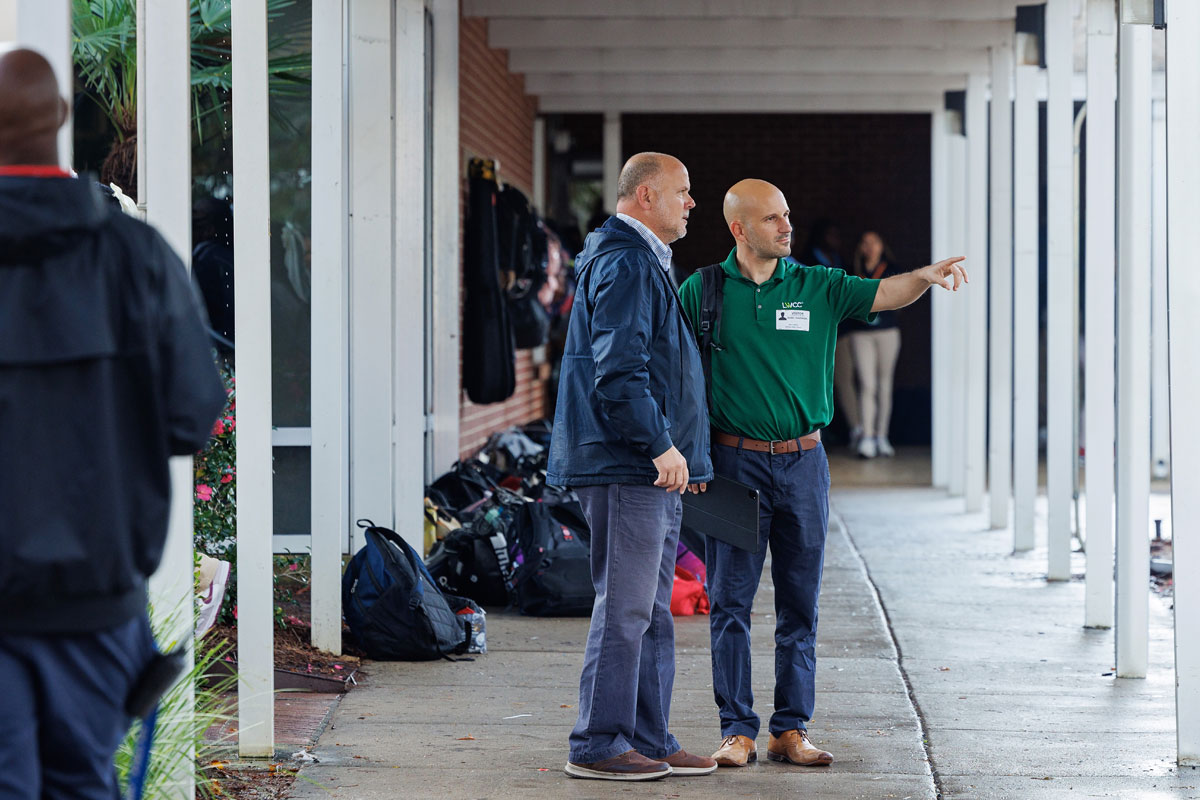Safety Tips for Teachers: Address Hidden Hazards Before School Starts
Long before the school bell rings, teachers are already preparing classrooms for a year of learning and growth. While decorating and organizing, it’s important to identify and eliminate potential safety hazards that could put educators and students at risk. At LWCC, we believe safe classrooms start with informed teachers. That’s why we’re committed to equipping educators with the knowledge and resources they need to prevent common injuries in the classroom and on campus.
These preventable workplace injuries happen more often than you may think, with approximately 176,000 teachers in the U.S. reporting job related injuries each year, according to the Bureau of Labor Statistics. New and experienced teachers are equally affected, with the majority of work-related injuries in schools involving employees younger than 25 or between the ages of 55 and 64, according to the Centers for Disease Control (CDC).
Planning for safety during summer prep with these tips, which are designed specifically for teachers, will help start the school year off right.
Start with Fire Safety

Addressing fire safety in the classroom is the foundation of a school’s safety plan and can be lifesaving in a fire emergency.
- Equip classrooms with visible, accessible fire extinguishers. Check that they are not expired.
- Make sure fire exit doors are never blocked. This is one of the most common hazards LWCC safety consultants find. Fire exit doors should be operable by children, not too heavy and there should be no locks or keys.
- Windows should be accessible and easy to open to allow proper ventilation and alternate escape routes.
- Lastly, alphabets and artwork set the vibe for a classroom. When decorating, make sure the most important poster is visible: the fire escape route.
Prevent Slips, Trips, and Falls

According to a recent study by the National Institute for Occupational Safety and Health (NIOSH) over a six-year period, workers in elementary schools reported 67,700 injuries from falls. Many of these injuries can be prevented by removing trip hazards, being smart about shoes and being careful when climbing.
- Never stand on a desk or a chair. Keep a stepladder in your classroom for easy access.
- Keep an eye out for sneaky slip hazards. Secure chords, flatten the edges of rugs and keep a tidy classroom.
- During summertime set-up, wear closed-toe, reliable footwear instead of loose sandals or flip flops.
Look Beyond the Classroom

Hazards in campus common areas can put teachers, staff, students and visitors at risk. Help avoid preventable accidents on campus by taking a look at playgrounds, maintenance areas and most importantly, bus loading and unloading zones.
Playgrounds
- Remove unnecessary trip hazards that do not belong on the playground. This can be anything from a jump rope left out after P.E., to a tree branch that fell during a storm. Take the initiative to maintain a fun and secure playground area and remove any items that don’t belong.
- Point out rusty or broken equipment that needs to be replaced.
- Keep an eye out for pinch points where little hands, fingers or loose clothing may get caught. If you find any, report those to your maintenance team and principal.
Restricted Access Areas
- Chemicals and cleaners should be kept out of reach and clearly labeled.
- Ladders, tools and other gear must be stored securely.
- If you come across maintenance materials in your classroom that should not be there, notify the facility’s manager immediately.
Bus Safety
- Although bus related traffic fatalities make up less than 1% of all traffic fatalities according to the National Highway Transportation Safety Administration (NTSA), children are at the highest risk of injury when getting on or off a school bus. Stay hyper alert when on bus duty and review safety rules with students.
- Know the signs and understand the bus signals:
- Yellow flashing lights mean the bus is approaching a bus stop.
- Red flashing lights with a stop-arm extended means students are boarding or exiting.
- Always keep students at least 10 feet back from bus or carpool lanes. That’s about five huge steps for young students.
LWCC SAFETY SERVICES
Teachers are among the most important people in children’s lives, and they play a crucial role in guiding children’s education, monitoring their wellbeing and keeping children safe. By following a few simple summer checklists, teachers can remove potential safety hazards and prep for success.
Teachers who are curious to find out how safe their classroom really is can set up a safety walkthrough with an LWCC consultant by reaching out to their school administrator.
For more information, or help creating a safety plan, click here visit our safety resource page.
More news
New Year’s Resolutions: Building on Safety Success in 2026
A successful safety and risk management program requires detailed planning, careful implementation, and commitment to a strong safety culture. To get started, follow LWCC’s five steps to safety.
How Successful Companies Turn Purpose into Action
LWCC sets the standard by building a culture where service strengthens both people and performance.
AASCIF Brings Nation’s Workers’ Comp Leaders to New Orleans
LWCC welcomed over 400 members for collaboration, professional development, and innovation aimed to advance how the industry cares for stakeholders nationwide.
Frequently asked questions
This is a sample two line introductory paragraph that serves as an intro on the blog/article preview. This is just sample text serving as a placeholder.

This is a sample two line introductory paragraph that serves as an intro on the blog/article preview. This is just sample text serving as a placeholder.This is a sample two line introductory paragraph that serves as an intro on the blog/article preview. This is just sample text serving as a placeholder.This is a sample two line introductory paragraph that serves as an intro on the blog/article preview.

This is a sample two line introductory paragraph that serves as an intro on the blog/article preview. This is just sample text serving as a placeholder.This is a sample two line introductory paragraph that serves as an intro on the blog/article preview. This is just sample text serving as a placeholder.This is a sample two line introductory paragraph that serves as an intro on the blog/article preview.

This is a sample two line introductory paragraph that serves as an intro on the blog/article preview. This is just sample text serving as a placeholder.This is a sample two line introductory paragraph that serves as an intro on the blog/article preview. This is just sample text serving as a placeholder.This is a sample two line introductory paragraph that serves as an intro on the blog/article preview.

This is a sample two line introductory paragraph that serves as an intro on the blog/article preview. This is just sample text serving as a placeholder.This is a sample two line introductory paragraph that serves as an intro on the blog/article preview. This is just sample text serving as a placeholder.This is a sample two line introductory paragraph that serves as an intro on the blog/article preview.

This is a sample two line introductory paragraph that serves as an intro on the blog/article preview. This is just sample text serving as a placeholder.This is a sample two line introductory paragraph that serves as an intro on the blog/article preview. This is just sample text serving as a placeholder.This is a sample two line introductory paragraph that serves as an intro on the blog/article preview.

This is a sample two line introductory paragraph that serves as an intro on the blog/article preview. This is just sample text serving as a placeholder.This is a sample two line introductory paragraph that serves as an intro on the blog/article preview. This is just sample text serving as a placeholder.This is a sample two line introductory paragraph that serves as an intro on the blog/article preview.





























